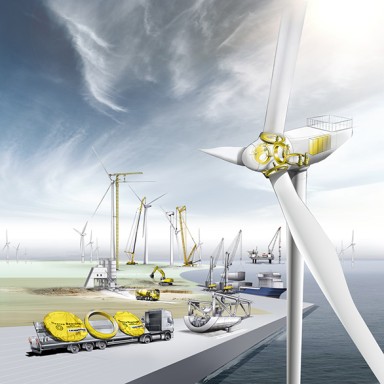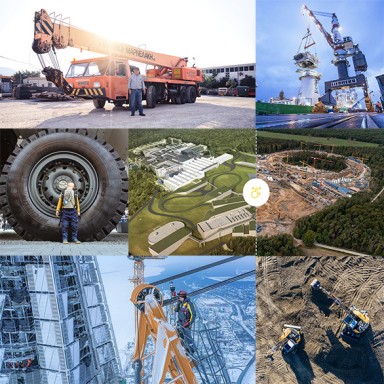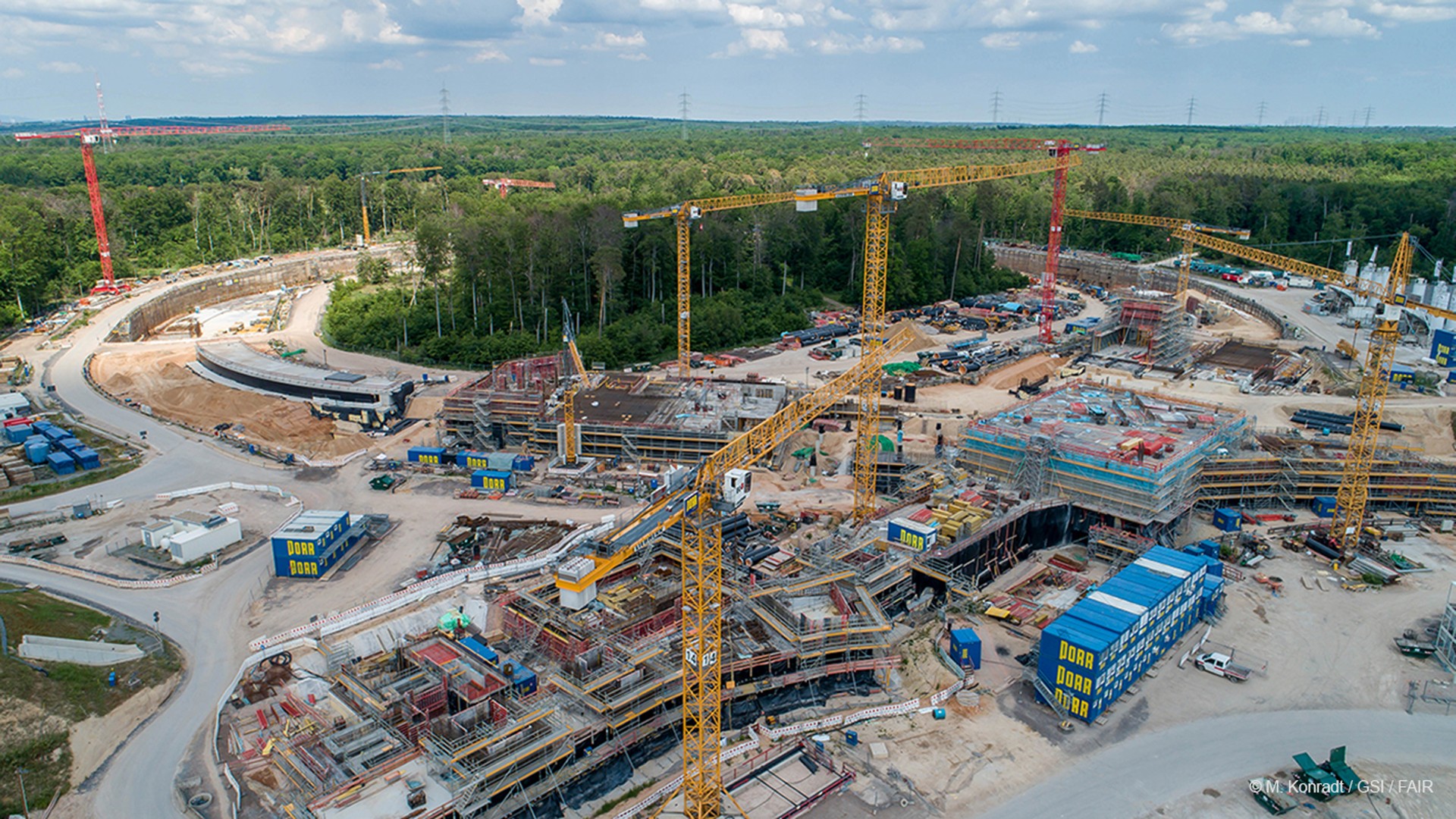
11 minutes reading time
Looping the cosmic loop
One of the world's largest research facilities for physics research is being constructed at the Helmholtz Center for Heavy Ion Research (GSI) in Darmstadt. When construction work is completed on the new Facility for Antiproton and Ion Research in Europe—or FAIR— scientist from all over the world will work on uncovering the mysteries of the universe from the Big Bang to the present day. The centrepiece of the facility will be a particle accelerator that is 1,100 metres in circumference. In this structure of cosmic proportions, ions and antiprotons will be accelerated at almost the speed of light for a variety of research projects.
Of construction sites and the Big Bang
The universe, the origin of matter, the stars and the preconditions of all existence are the subject of the work of legions of scientists, philosophers and engineers worldwide. One center of universe exploration is located in Darmstadt: the GSI Helmholtz Center for Heavy Ion Research. The facility is considered to be a supernova in the field of scientific research, not least because it houses a completely unique accelerator for heavy ions. Among the centre’s most important achievements is its discovery of new chemical elements and the development of a new cancer therapy.
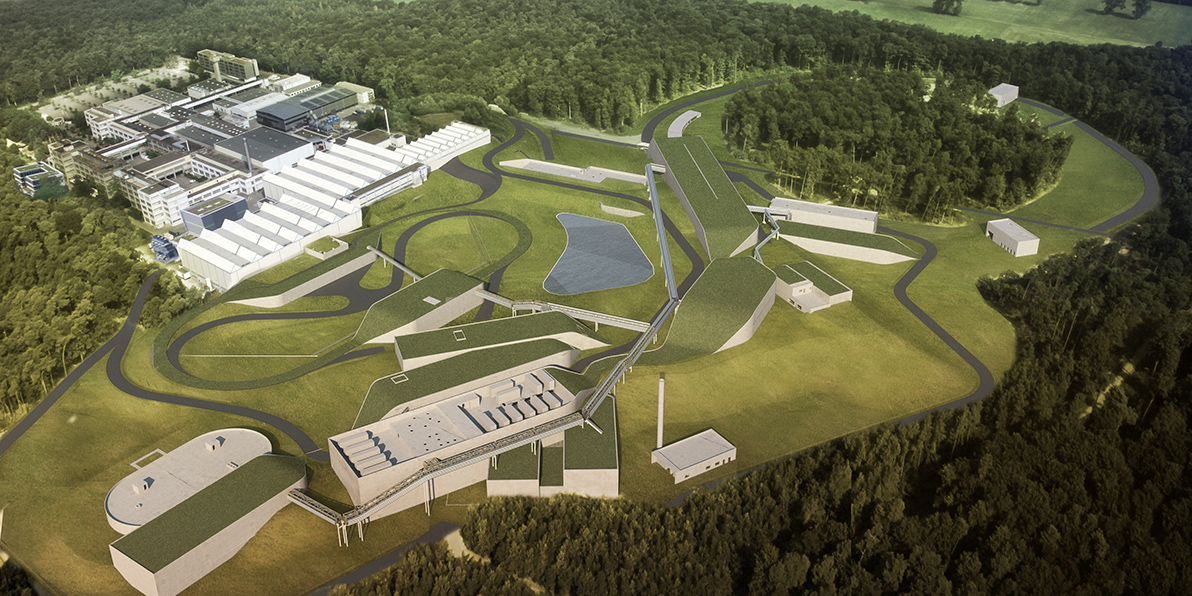
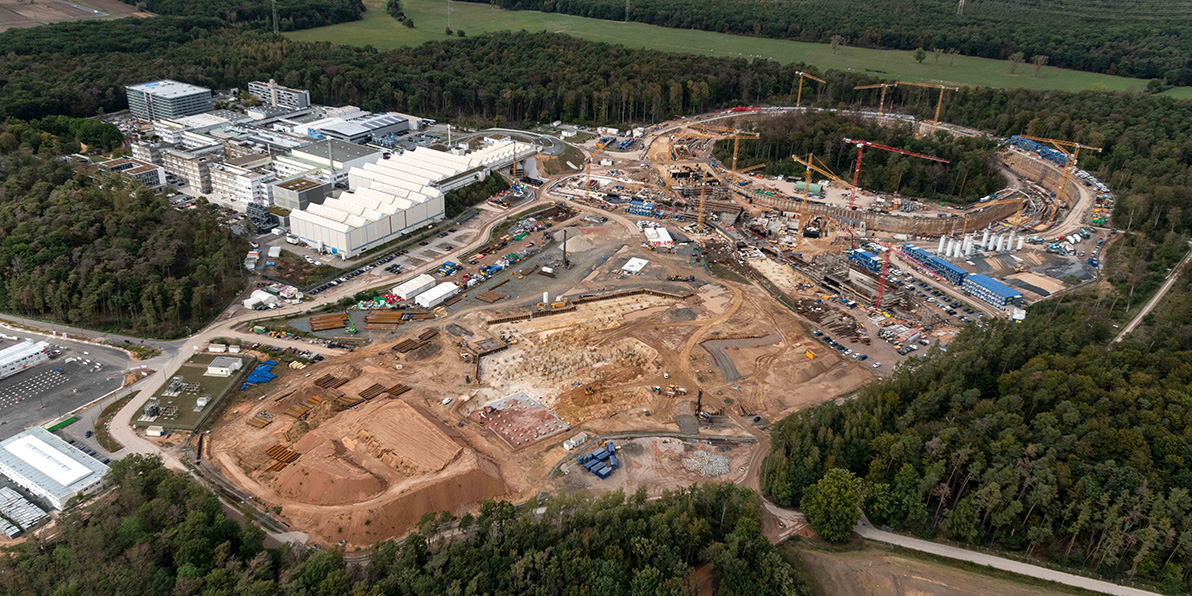
The universe in a laboratory
And it is precisely there at GSI in Darmstadt that one of the largest research projects worldwide is currently being built: the international accelerator center FAIR - Facility for Antiproton and Ion Research in Europe. Nine countries (Germany, Finland, France, India, Poland, Romania, Russia, Sweden and Slovenia) signed an international agreement in 2010 and are now investing more than three billion euros in the project until it becomes operational. Hopes are resting heavily on the centrepiece of the new facility—the new SIS100 ring accelerator, which will enhance the existing accelerator facilities. Here matter will be exposed to extremely high temperatures, pressure and densities to mimic the conditions that exist on large planets, stars and supernovae. Jörg Blaurock, Technical Director of the GSI and FAIR explains how the accelerator enables scientists to create cosmic matter in a laboratory. Particles are “shot” at small samples of material where matter is created for a short moment at the nanoscopic point of impact. Several thousand researchers from all over the world will use the facility to gain new insights into the structure of matter and the evolution of the universe from the Big Bang to the present day.
Accelerating ions at near light speed
“The SIS100 runs through an underground tunnel located 17 metres below the surface. It has a circumference of 1,100 metres and can accelerate ions of all the naturally occurring elements in the periodic table up to 99 percent of the speed of light,” Jörg explains. “The magnets that hold the ions in their orbit are superconducting and cooled with liquid helium to -269°C. It’s an absolute a feat of engineering.” The construction of the buildings that house the facilities also requires a considerable amount of ingenuity.
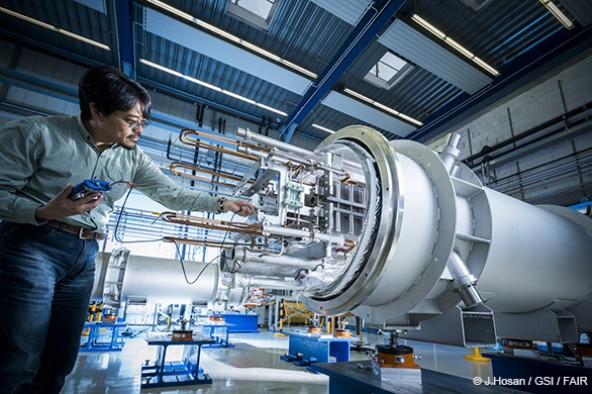
And this is where the experts from Liebherr Tower Crane Solutions come into play. Eric Konijn from the Netherlands is the go-to project engineer for unusual construction projects. He has worked closely with construction company Porr Deutschland and heavy-duty logistics company Wasel to develop a crane concept that would effectively support the construction of the circular accelerator tunnel. The solution needed to ensure that multiple cranes could operate simultaneously without crossing paths. They also needed to safely clear the surrounding treetops and pivot by 360°. Eric knew he needed to find a flexible solution, so he designed a rail system that could be constructed inside the tunnel site. “It’s often necessary to move cranes about on tunnel construction sites. And this can be very costly and time-consuming. Installing the tracks provided much more flexibility and avoided the need to continually assemble and disassemble the group of cranes. This soon proved to be a very good solution, especially during the extensive concreting work.”
Safety is always a top priority for the planning engineers at Liebherr Tower Crane Solutions. “Collisions between cranes must be avoided at all costs. It’s also necessary to strike a balance between mobility and the high static requirements. This is especially important in stormy conditions,” Eric continues. With a tunnel depth of 17 meters, the cranes, each with 100 tons of ballast on the tower base, were to reach a height of 40 to 60 meters in order to be able to turn over each other above the neighboring trees with their jibs.
The joy of problem solving
As a trained mechanical engineer, Eric relishes the chance to pit his wits against tricky engineering puzzles. He is so devoted to his profession, he even spends his free time touring construction sites and building model cranes. As he explains, “I love it when I get the chance to combine creativity and top-notch engineering capabilities.” Luckily, Eric had the chance to apply both these skills during the FAIR project. Excellent time management skills also became a key requirement due to the tight project schedule. “There were only three months between the first request and the launch,” Eric explains. This was the first time he had used a sliding system to choreograph the movements of multiple Liebherr cranes. “This was new territory for everyone involved in many ways, but it has proven to be 100 percent successful.”
Eric has recently moved into a new role in Singapore but is closely following progress on the site in Darmstadt. The cranes completed all the work a while ago. As Jörg Blaurock explains, “In total, more than 65,000 tonnes of reinforcing steel and 600,000 cubic metres of concrete were used at the FAIR facility. Two million cubic metres of earth had to be moved around for this purpose. Everything happens on a massive scale at FAIR. What’s more, everything has to be completed without interrupting the scientific work at the existing facility.” The heavy ion research programme is still continuing to run at full throttle at the GSI site while the new facility is being built.
Standstill is not an option
So, whilst experiments that will lead to a deeper understanding of matter and the universe continue unabated, 25 new buildings are popping up on the 150,000-square-metre site next door. “This is an amazing thing to see,” explains Jörg, “But the ongoing research activities place very high constraints on the construction efforts.” The construction team is glad they can rely each day on a cohesive construction schedule that meets the demands of this highly complex large-scale project. All the structural and civil engineering work is carefully coordinated alongside the work that is being carried out on the accelerator and the other scientific work. “The goal of revealing to humanity the secrets of the universe, planets, stars and supernovae as well as the origin of all cosmic matter is now coming into closer view.
It’s great to be involved in creating such a marvellous research facility for the Einsteins of today, tomorrow and the day after that!”



